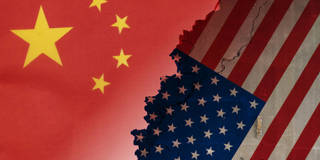
Trump vs. China, Round Two
Much of the discussion about the Sino-American rivalry has framed China’s rise as the primary catalyst for US policy shifts. But the conflict can also be traced back to a democratic deficit in American foreign policymaking, which will be widened if President-elect Donald Trump escalates the trade war with China as promised.
LONDON – In August 2019, amid an escalating trade war with China, then-US President Donald Trump fired off a series of tweets directing American companies to “immediately start looking for … alternative[s] to China” and shift their manufacturing back to the United States. The demand sent stock markets into a tailspin and alarmed US businesses with exposure to China.